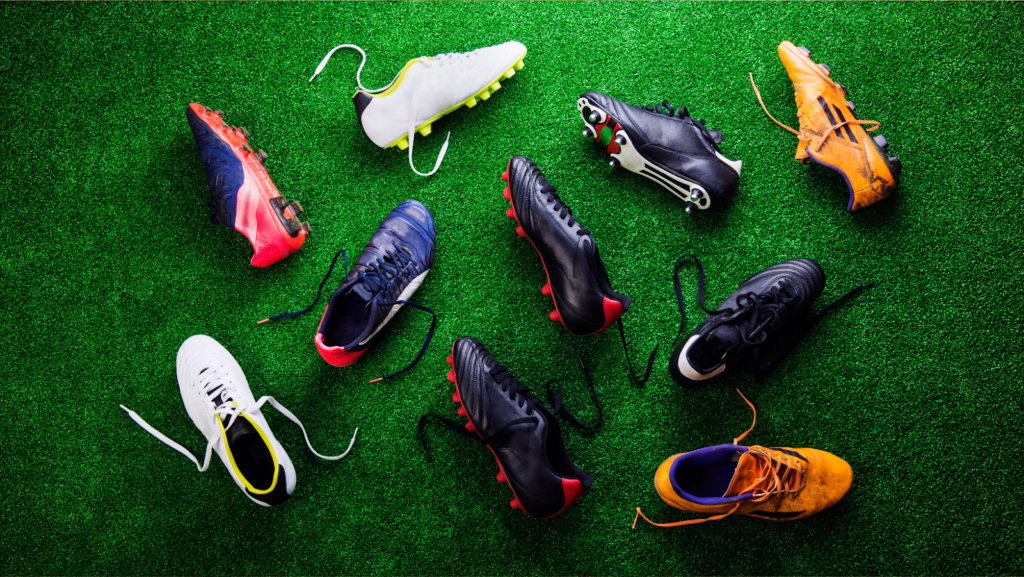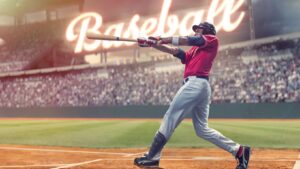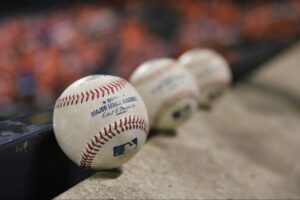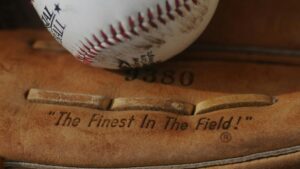
Football and baseball cleats serve different purposes and it is important to choose the right type of cleat for the activity you will be participating in to avoid injuries. Football cleats have pointed toe spikes that are designed to dig into the turf to provide traction and stability when making sharp cuts. The extra traction is also helpful when playing on a muddy field. Baseball cleats, on the other hand, have rounded toes and smaller spikes. This design helps players run faster and change directions quickly without losing their footing. Because baseball is played on a variety of surfaces, including dirt, grass, and artificial turf, baseball cleats need to be versatile and provide good traction on all types of surfaces. When choosing between football and baseball cleats, consider the type of surface you will be playing on and the level of traction you need.
What is the difference between football and baseball cleats
When it comes to playing sports, having the right footwear is crucial. Depending on the game, different shoes are designed to provide the traction and support needed to perform at your best. For example, football and baseball cleats serve different purposes. Football cleats are typically made of leather or synthetic materials and have studs on the bottom to provide traction on grassy fields.
Baseball cleats, on the other hand, tend to be made of softer materials like kangaroo leather. They also have metal spikes on the sole to help grip the infield dirt. While both types of cleats serve the same purpose – providing traction and stability – they are designed specifically for two different sports. As a result, it’s important to choose the right type of cleat for the game you’re playing.
Football cleats are designed for traction and stability on the field
One of the biggest differences between football and baseball cleats is the type of surface they are designed for. Football cleats have pointed toe spikes that help players dig into the turf to gain traction. This extra grip is especially important when playing on a muddy field.
Baseball cleats, on the other hand, have smaller metal spikes on the sole. This design helps players grip the infield dirt, which is important for quick starts and stops. Baseball cleats are also designed to be lighter weight, which helps players run faster.
Baseball cleats have smaller spikes and are designed for gripping the dirt infield
When choosing between football and baseball cleats, it’s important to consider the type of surface you’ll be playing on. If you’re playing on a grassy field, football cleats will provide the extra traction you need. However, if you’re playing on artificial turf or dirt, baseball cleats will offer better grip and support.
No matter what type of cleat you choose, it’s important to make sure that they fit properly. Ill-fitting cleats can cause blisters and other problems. Be sure to try on both types of cleats before making a purchase to ensure a comfortable fit.
Football cleats are typically made of leather or synthetic materials
When it comes to material, football and baseball cleats are usually made from different materials. Football cleats are typically made of leather or synthetic materials. This is because they need to be durable enough to withstand the rigors of the game.
Baseball cleats, on the other hand, are often made of softer materials like kangaroo leather. This helps keep the cleat light-weight and comfortable. It also allows for a better grip on the ball.
The type of material used in baseball cleats helps players grip the ball
Baseball cleats are typically made of metal or plastic
The type of material used in baseball cleats also affects the price. Metal cleats are usually more expensive than plastic cleats. However, they also provide better traction and support.
When choosing between football and baseball cleats, it’s important to consider your budget. If you’re looking for a cheaper option, plastic baseball cleats may be the way to go. However, if you’re willing to spend a little extra, metal baseball cleats will provide better support and traction.













